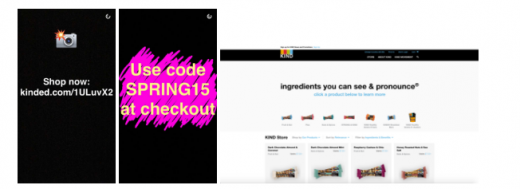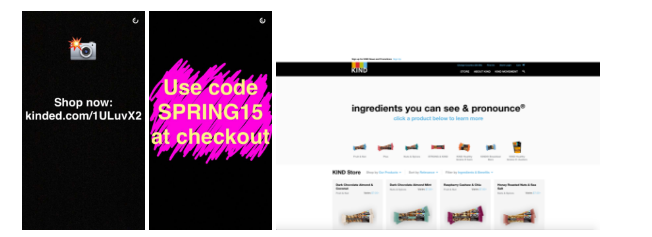Dark Social: What It Is And Why You Should Care
June 23, 2016
Dark social. If you’re not familiar with it, it might sound ominous and uninviting. It might remind you of more malicious internet terminology such as the dark web and black hat hacker. And even if you’re a marketer who is familiar with the word, you probably cringe when you hear it. There’s no avoiding dark social. In fact, we contribute to it daily with our snaps, text messages and emails.
First coined by Alexis C. Madrigal, a senior editor at The Atlantic, dark social refers to social sharing that comes from outside sources that web analytics tools are not able to track.
Globally, 70% of all online referrals come from dark social. This affects marketers and brands’ ability to collect enough data to paint a complete picture of how content, products, or channels are performing.
But just what is the impact of dark social on brands and how can you take control of your data?
We’re Creating The Age Of Dark Social
The digital space is becoming so fragmented that new forms of communication are being created each day and a lot of data gets lost.
If you think of some of the hottest apps today – Instagram, Snapchat, Whatsapp, Facebook Messenger – there’s a common theme as to why these platforms are so sticky. Consumers want instant gratification, one-to-one messaging and rich visuals.
“All of these apps are driving communication that is really instant,” Marc Jensen, the chief technology officer for digital advertising agency space150, told CBS News. “I mean Snapchat, the interface is really hard for a lot of people to understand, but even with that, you turn it on and the camera is is running right away. It’s there immediately for people.”
Traditional analytics tools, which were built for one-to-many marketing, isn’t able to capture activity on these newer platforms.
What Dark Social Means For Marketers
Without a transparent view into each channel, marketers aren’t able to see the full picture of how their efforts are paying off.
With known or “non-dark” channels, brands track using tags such as UTM parameters.
For example, say you’re sharing a news article on Twitter using a ‘Tweet This’ button on the side of the page.
A window will open with an auto-populated tag attached to the end of the URL. It will look something like this:
“utm_campaign=June+2016&utm_medium=Newspaper&utm_source=TwitterShare”. This tag shows that the referrer was the Twitter share button on the article’s page.
But dark social links don’t automatically attach these tracking links unless the shared link was copied with a tag in it. And if you think about the average mobile user who browses content through an app or on their browser, most of the links they’re copying and sharing with friends won’t have tracking tags in them. Or, if they do, they could be the wrong ones – if someone finds a link on Twitter and shares the full link in an email, that data is no longer valid.
So the data gets lost, which means marketers have a harder time figuring out where their audiences are and how they’re interacting with the brand.
Here are some of the biggest dark social channels today:
– SMS/Chat
Text messaging and native messaging apps such as WhatsApp, Facebook Messenger and even Slack and Google Hangouts do not pass referrers when someone clicks on a link.
Personal email-providers like Gmail, Yahoo and Outlook have strict user privacy regulations. Activity like click data doesn’t pass a referrer code.
– Native Mobile Apps
Most mobile apps are shifting towards keeping content in-app to build a more consistent user experience. Facebook’s Instant Articles, for example, load news articles natively. Other apps, like Snapchat, don’t have clickable links and users have to type the link directly into the browser. In both cases, this traffic will be attributed as direct traffic.
– Private & Secure Browsing
Browsing on Chrome Incognito mode or using HTTPS won’t pass a referrer code.
But It’s Not A Shot In The Dark
Dark social doesn’t need to be scary to work with, though. Links are the universal connections that bridge together social channels, whether visible or not. They drive you from an email onto a sale page or from one mobile app into another.
Using UTM parameters and shortened links, you can shine a light on your dark traffic.
You can use Bitly to track clicks that would otherwise become dark traffic. Here are some examples we’ve seen in the wild:
KIND on Snapchat
KIND used Bitlinks in their spring campaign to organically drive traffic out of Snapchat and track engagement.

Snapchat users take a screenshot of the Bitlink, paste it into their browser, and fill check out from there. This helps KIND get an idea of Snapchat engagement and how many people click beyond Snapchat and into the KIND website.
Brady Dyer on email
Photographer Brady Dyer uses Bitlinks as a way to track how prospects and clients engage with his work via email.

“I include this link (http://bit.ly/bdpimagelab) every time I email clients with their photos. It’s a video explaining how to access your photos,” Brady says.
This link gives Brady some insight into how many clients are opening his emails, how many click through and how many watch his tutorial video. Being able to see each step of the user journey allows Brady to see where people are most engaged and where people are dropping off so he can optimize his content accordingly.
Dark Social & The Customer Experience
Dark social reflects the reality of the customer journey today: we’re all switching channels and devices throughout the day. Nothing is linear. But, by using trackable links, brands can easily gain insight into how consumers are sharing content across messaging apps, texts, and email.
As the customer journey grows more fragmented and complex, marketers will have to adapt their tools for this behavior. Rather than using centralized channels and platforms, more consumers are opting for one-to-one social interactions. Only by securing the visibility of every piece of content – and the journey it takes – can you ensure you own the customer experience from start to finish.
Digital & Social Articles on Business 2 Community
(16)



